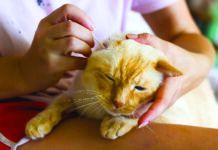When choosing an E-collar
Q I have been a veterinary technician for the past six months, and I’m hoping you can give me some good advice that I can pass on to our clients. I am often asked by cat owners about the best E-collar to use after surgery. There are more on the market today than ever before, but I don’t want to give them the wrong advice.
I also realize that it would be difficult for you to recommend specific brands that would be readily available for cat owners, but I am wondering if there are any specific criteria to look for when making a choice. Any help would be appreciated.
Cleo Norton
A Dear Cleo: Good question! For readers who don’t know, an “E-collar” is shorthand for an “Elizabethan collar,” a reference to the collars’ similarity to the large, frilly collars worn by aristocratic women in Elizabethan England. They are often used following surgery in both cats and dogs to prevent licking at incisions (the idea that it’s good for animals to lick at incisions is an old wives’ tale).
In particular, animals have a tendency to try to lick at incisions on the legs and feet, tails and genital areas — but some animals will try to lick at an incision in any location.
There are basically two types of E-collars: clear, hard plastic ones and soft fabric ones, which are usually blue. Both can be obtained at any large pet store, or from your vet. Neither is clearly preferred. The hard ones have been around longer, and are well-tolerated by many cats.
However, these collars are stiff and have a tendency to bump against surrounding objects, such as furniture, the food bowl or the litter box, and some cats do not like them for that reason. Because they aren’t flexible, they can also make it difficult for cats to eat and drink. For these reasons, some cats prefer the soft type.
So, it’s a matter of trial and error — finding the collar the individual cat seems to prefer. Regardless of the collar you choose, be sure it is long enough to prevent licking at the incision, but short enough not to make it difficult for the cat to eat and drink — just past the end of the nose is a good rule-of-thumb.
John Berg, DVM, DACVS
Professor of Small Animal Surgery
Cummings School of
Veterinary Medicine
at Tufts University



